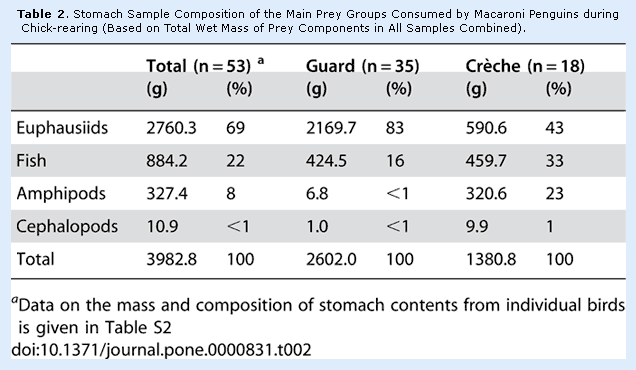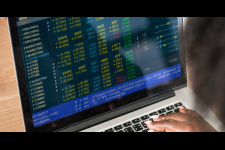Several studies, journal guidelines, and discourses on scientific writing1-10 affirm the critical role that tables, figures, and graphs (or display items) play in enhancing the quality of manuscripts. Scientific tables and graphs can be utilized to represent sizeable numerical or statistical data in a time- and space-effective manner. Readers are often drawn towards tables and figures, because they perceive it as easy-reading, as compared to reading a verbose account of the same content. They rightly assume that these display items will provide them with a larger amount of information in a shorter time span.
At the manuscript screening stage, these display items offer reviewers and journal editors a quick overview of the study findings, and once the paper is published, they do the same for readers (some of whom look only at these display items and not at the rest of the manuscript7). However, tables and figures only add value to the format of a research report, if they are brief yet sufficiently informative.
These visual elements help authors present detailed results and complex relationships, patterns, and trends clearly and concisely;1-8,11,13,14 reduce the length of the manuscript;3,5,13,15 and enhance readers’ understanding of the study results.11,12 Therefore, these tools are integral to the format of a research paper because, if clear and well-organized, they speed up the comprehension and interpretation of the study’s findings.
But while well-presented tables and figures in research papers can efficiently capture and present information, poorly crafted tables and figures can confuse readers and impair the effectiveness of a paper.16 To help authors get the balance right, this article presents some essential guidelines to the effective use of tables and figures in research papers.
Planning your paper: When to use tables and figures in scientific papers
Producing effective tables and figures requires careful planning that begins at the manuscript writing stage itself. Here’s how to go about it:
- First, check out what your target journal has to say on the issue. Some journals limit the number of tables and figures and also have specific guidelines on the design aspects of these display items.
- Next, decide whether to use tables and figures or text to put across key information.(Refer to Table 1 below for help on making this decision.)
- After you’ve decided to use a display item, choose the display item that best fits your purpose based on what you wish readers to focus on and what you want to present.(Refer to Table 1 below for more information.)
- Finally, follow the best-practice guidelines outlined in section 3 and review the examples presented in section 4 of this paper to ensure that your tables and figures are well-designed.
Table 1: How to choose between tables, figures, and text to present data

Best practices for presentation of tables and figures in scientific papers
General guidelines:
1. Ensure that display items are self-explanatory: Some readers (and certainly reviewers and journal editors) turn their attention to the tables and figures before they read the entire text, so these display items should be self-contained.6,8,9,12,16,20
2. Refer, but don’t repeat: Use the text to draw the reader’s attention to the significance and key points of the table/figure, but don’t repeat details.5,12,16,19,21,22 So for example, you could highlight your main finding (e.g., “We found that the treatment was effective in only 24% of the cases, as shown in Figure 1”), but don’t repeat exact values (e.g., “As Table 2 shows, 32% of the subjects chose Option 1, 12% chose Option 2, 10% chose Option 3, and 46% chose Option 4”). This defeats the very purpose (efficiency and clarity) of having a table or figure.
3. Be consistent:6,9,12,17 Ensure consistency between values or details in a table (e.g., abbreviations, group names, treatment names) and those in the text.
4. Give clear, informative titles:16,17 Table and figure titles should not be vague9,19 but should concisely describe the purpose or contents of the table/figure and should ideally draw the reader’s attention to what you want him/her to notice17 (e.g., Advantages and disadvantages of using sleep therapy with patients suffering from schizophrenia). Also ensure that column heads, axis labels, figure labels, etc., are clearly and appropriately labelled.
5. Adhere to journal guidelines: Check what your target journal has to say about issues like the number of tables and figures, the style of numbering, titles, image resolution, file formats, etc., and follow these instructions carefully.18,23
Guidelines for tables:
1. Combine repetitive tables: Tables and figures that present repetitive information will impair communication rather than enhance it.8,12 Examine the titles of all your tables and figures and check if they talk about the same or similar things.8 If they do, rethink the presentation and combine or delete the tables/graphs.
2. Divide the data:7 When presenting large amounts of information, divide the data into clear and appropriate categories and present them in columns titled accurately and descriptively.
3. Watch the extent of data in your tables: If the data you have to present is extensive and would make the tables too cluttered or long, consider making the tables a part of the Appendix or supplemental material.8
4. De-clutter your table: Ensure that there is sufficient spacing between columns and rows7 and that the layout does not make the table look too messy or crowded.
Guidelines for figures:
1. Ensure image clarity: Make sure that all the parts of the figure are clear:18 Use standard font; check that labels are legible against the figure background; and ensure that images are sharp.24
2. Use legends to explain the key message:25 Figure legends are pivotal to the effectiveness of a figure. Use them to draw attention to the central message as well as to explain abbreviations and symbols.
3. Label all important parts: Label the key sections and parts of schematic diagrams and photographs, and all axes, curves, and data sets in graphs and data plots.6,7,16,18
4. Give specifics: Include scale bars in images and maps; specify units wherever quantities are listed; include legends in maps and schematics; and specify latitudes and longitudes on maps.7,18
Examples of well-prepared tables and figures
This section presents one example each of a well-prepared table and a well-designed figure.
The table below is taken from a dietary study on chick-rearing macaroni penguins26 and is an example of an effective table for the following reasons:

1. The title clearly describes what the table is about.
2. The column heads are descriptive and clearly indicate the nature of the data presented.
3. The data is divided into categories for clarity.
4. It is self-contained and can be understood quite well even without reference to the entire paper.
5. Superscript letters and notes are used to offer additional, clarifying information.
6. Sufficient spacing is present between columns and rows; the layout is clean, and the font is legible.
Examples of an effective figure (graph)
The figure below from a paper on the efficacy of oyster reefs as natural breakwaters27, scores on several counts:

- The informative title that immediately tells the reader what to expect in the graph.
- The axes are labeled clearly.
- The key clearly identifies what each element in the graph stands for.
- A figure legend at the bottom draws the reader’s attention to the graph's key points.
- A note at the bottom acknowledges the source.
- The graph is 2-dimensional, with no clutter.
Conclusion
Figures and tables, or display items, are powerful communication tools—they give your manuscript a professional feel, attract and sustain the interest of readers, and efficiently present large amounts of complex information.7 Moreover, as most journals editors and reviewers will glance at these display items before they begin a full reading of your paper, their importance cannot be overemphasized.
You might be interested in checking out this insightful course: Create effective tables for your research paper
1. Council of Science Editors. Journal Style and Format. In Council of Science Editors(Eds.), Scientific Style and Format: The CSE Manual for Authors, Editors, and Publishers, 7th Edition (p. 460). Reston, VA: Rockefeller University Press, 2006.
2. American Psychological Association. APA Editorial Style. In Publication Manual of the American Psychological Association,5th Edition (pp. 147–201). Washington, DC: American Psychological Association, 2001.
3. International Committee of Medical Journal Editors. Uniform Requirements for Manuscripts Submitted to Biomedical Journals: Writing and Editing for Biomedical Publication [Accessed: Aug 8, 2011] Available from: http://www.ICMJE.org.
4. Cooper RJ, Schriger DL, Wallace RC, Mikulich VJ, Wilkes MS. The Quantity and Quality of Scientific Graphs in Pharmaceutical Advertisements. Journal of General Internal Medicine, 2003; 18: 294–297.
5. Durbin CG Jr. Effective Use of Tables and Figures in Abstracts, Presentations, and Papers. Respiratory Care, 2004; 49(10): 1233–1237.
6. EMGO Institute for Health and Care Research. Reporting Results in Tables and Figures. In Guidelines in the Analysis Phase (pp. 14–16). [Accessed: Aug 8, 2011] Available from: http://www.emgo.nl/kc/reporting-results-in-tables-and-figures/
7. Springer. The Importance of Figures and Tables. [Accessed: Aug 8, 2011] Available from: http://www.springer.com/authors/journal+authors/training?SGWID=0-1726414-12-837813-0.
8. Clark JC. Effective Tables and Figures. [Accessed: Aug 8, 2011] Available from:http://ion.uwinnipeg.ca/~clark/research/comm/C12_FIGU.pdf.
9. McMillan VE. Using Tables and Figures. In Writing Papers in the Biological Sciences (pp. 30–50). New York: St. Martin’s Press, 1988.
10. Smith LD, Best LA, Stubbs DA, Archibald AB, Roberson-Nay R. Constructing Knowledge: The Role of Graphs and Tables in Hard and Soft Psychology. American Psychologist, 2002; 57(10): 749–761.
11. Purdue Online Writing Lab. APA Tables and Figures 1. [Accessed: Aug 8, 2011] Available from: http://owl.english.purdue.edu/owl/resource/560/19/.
12. SAGE Publications. How to Get Your Journal Article Published. [Accessed: Aug 8, 2011] Available from: http://www.uk.sagepub.com/journalgateway/files/how_to_get_published.pdf.
13. Paradise C. How to Record and Present Your Data Graphically Using Excel. [Accessed: Aug 8, 2011] Available from: http://www.bio.davidson.edu/people/midorcas/research/herpstaff/StevePrice/BIO%20112
14. Schriger DL, Sinha R, Schroter S, Liu P, Altman D. From Submission to Publication: A Retrospective Review of the Tables and Figures in a Cohort of Randomized Controlled Trials Submitted to the British Medical Journal. Annals of Emergency Medicine, 2006; 48(6): 750–756.
15. Institute of Food Technologists. Author Guidelines. [Accessed: Aug 8, 2011] Available from:http://www.ift.org/Knowledge-Center/Read-IFT-Publications/Journal-of-Food-Science/Authors-Corner/Author-Guidelines.aspx.
16. The University of ReadingStatistical Services Centre. Informative Presentation of Tables, Graphs and Statistics. [Accessed: Aug 8, 2011] Available from: http://www.reading.ac.uk/ssc/n/resources/Docs/PresentationOfTablesGraphsAndStatistics.pdf.
17. Hoagland N. Using Tables and Figures in an Academic Research Paper. [Accessed: Aug 8, 2011] Available from: http://polaris.umuc.edu/~nhoaglan/COMM600/Tables%20and%20Figures.pdf.
18. Author Aid Resource Library. Tables and Figures: Some Basic Advice. [Accessed: Aug 8, 2011] Available from:http://www.authoraid.info/resource-library/authoraid-workshop-on-research-writing-march-2011/Nepal-RM_01a-Tables%20and%20Figures-minus%20photos.ppt/at_download/file.
19. Northwestern’s Online Writing Resources. Visual Communication: Document Design, Figures, and Tables. [Accessed: Aug 8, 2011] Available from: http://nuwrite.northwestern.edu/communities/design/docs/engineering-design-and-communication-principles-and-practice/chapter_20.pdf.
20. Marine Ecology Progress Series. Guidelines for MEPS Authors. [Accessed: Aug 8, 2011] Available from: http://www.int-res.com/journals/meps/guidelines-for-meps-authors/.
21. BMJ Publishing Group. The Essentials of BMJ Style. [Accessed: Aug 8, 2011] Available from:http://resources.bmj.com/bmj/authors/bmj-house-style.
22. The Geological Society of America. Geology Guidelines. [Accessed: Aug 8, 2011] Available from: http://www.geosociety.org/pubs/geoguid6.htm.
23. Wiley-Blackwell. Author Services: Electronic Artwork Guidelines. [Accessed: Aug 8, 2011] Available from: http://authorservices.wiley.com/bauthor/illustration.asp.
24. Wiley-Blackwell. Electronic Artwork—An Introduction. [Accessed: Aug 8, 2011] Available from: http://authorservices.wiley.com/electronicartworkguidelines.pdf.
25. PLOS Biology. PLOS Biology Guidelines for Authors. [Accessed: Aug 8, 2011] Available from: http://www.plosbiology.org/static/guidelines.action#figures.
26. Deagle BE, Gales NJ, Evans K, Jarman SN, Robinson S, et al. Studying Seabird Diet through Genetic Analysis of Faeces: A Case Study on Macaroni Penguins (Eudypteschrysolophus). PLoS ONE 2007; 2(9): e831.
27. Cyphers SB, Powers SP, Heck KL Jr, Byron D. Oyster Reefs as Natural Breakwaters Mitigate Shoreline Loss and Facilitate Fisheries.PLoS ONE2011; 6(8): e22396.
Recommended reading:
- Referring to tables and figures in text
- Avoid instructions such as "See Table 2" and "Refer to Figure 6"
- Quick tips on writing titles for tables and figures in scientific papers
- Presenting your tables effectively
- The complete guide to writing a brilliant research paper
You might find this course helpful: Create effective tables for your research paper











